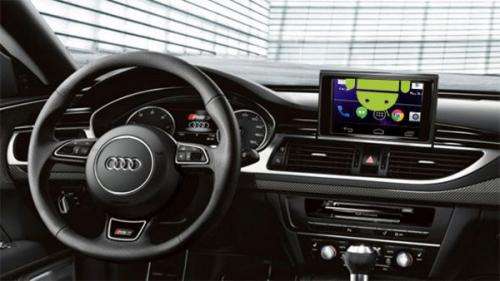Android Auto, intended to become the driver's popular go-to source for audio entertainment and messaging services, is aiming for the driver's seat and developer interest. Simply put, Google wants to bring the Android platform into the car with a user interface that is optimized for driving. To that end, Google earlier this week released its first APIs for building Android Auto-enabled audio and messaging apps.
On Tuesday, Daniel Holle, product manager, blogged, "Today, we're excited to announce the availability of our first APIs for building Auto-enabled apps for audio and messaging." Commuters in the US spend an average of one hour a day in their car, and another stat says a person checks the smartphone an average of 125 times a day. "Cars keep us going while our phones keep us connected," said Timothy Jordan on DevBytes, but using your phone while driving...well, you know the rest. Accidents do happen. What if you could use your phone in a safer way? And better yet, said Jordan in Google's message for developers, what if developing for this platform were easy and familiar? It's the same platform you already use for phones, tablets, watches, and so forth, but now your app can extend to the car. Android Auto APIs will let developers extend their existing apps targeting Android 5.0 (API level 21) or higher to work in the car without having to worry about vehicle-specific hardware differences.
Using Android Auto is easy, said Jordan. Users go to the Google Play store and download apps that support Android Auto onto their phone. When they connect their phone to the car, the phone goes into car mode and casts the Android Auto experience to the car's screen. Although all the apps and services are running on the phone, they are displayed in the car's dash. Users interact with them using car controls such as a built-in touchscreen and microphone.
Google said they are working with developers to bring popular apps to Android Auto. In his blog, Holle said, "We've already started working with partners to develop experiences for Android Auto: iHeartRadio, Joyride, Kik, MLB.com, NPR, Pandora, PocketCasts, Songza, SoundCloud, Spotify, Stitcher, TextMe, textPlus, TuneIn, Umano, and WhatsApp."
The APIs for building Auto-enabled apps are available now. When connected to compatible vehicles, apps on handheld devices running Android 5.0 or higher can communicate with Android Auto. While the APIs became available as of Tuesday, apps extended with Android Auto cannot, however, be published quite yet, said Holle. "More app categories will be supported in the future, providing more opportunities for developers and drivers of Android Auto. We encourage you to join the Android Auto Developers Google+ community to stay up-to-date on the latest news and timelines."
Consumer Reports, while at the LA Auto Show, took a look at Android Auto as the in-car system for interacting with your Android phone. George Kennedy, senior associate editor-Autos, said, "We experienced the software firsthand, and users of Lollipop 5.0 devices will find the look and feel immediately familiar." The system allows for navigation of Google Maps, which was used from the touchscreen in a 2015 Hyundai Sonata. You get live traffic updates, among other features, and Android Auto allows you to receive text messages without reaching for your phone. The system provides access to audio apps too. Android Auto will function with phones running Android 5.0 Lollipop and later.
Writing in Consumer Reports, Mark Rechtin and Seung Min Yu said what they specifically liked about Google's Android Auto—first of all, the playlist experience. "Many times, the playlist you were listening to on your phone reverts to the first song once you connect to your car." Not Android Auto. It continues playing whatever you were listening to before you got in the car.
Another feature they liked concerned safety measures to guard against driver distraction. Android Auto puts texting, email, and third-party messaging apps such as WhatsApp into speech-to-text mode. "Incoming messages are read to you by Google's speech interface. You can respond by pressing your vehicle's voice command button on the steering wheel, and the interface will turn your words into text." Talk to Google allows searches via steering wheel buttons.
More information:
android-developers.blogspot.co … th-android-auto.html
developer.android.com/auto/index.html
© 2014 Tech Xplore























